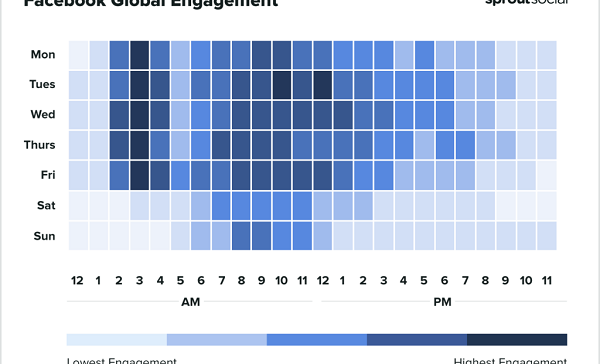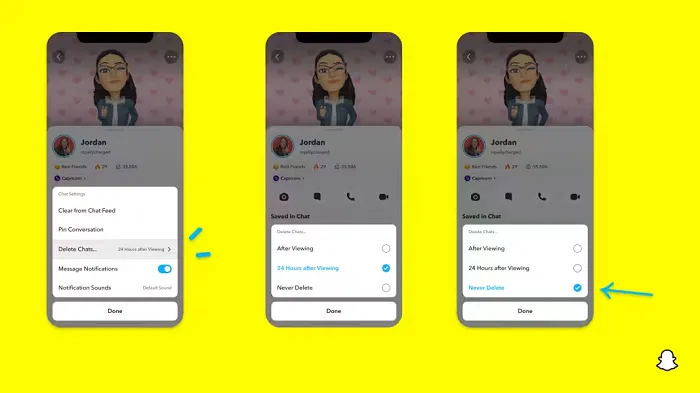SOCIAL
New Report Provides Insight into Best Posting Times on Facebook, Instagram, Twitter and LinkedIn

Okay, before we get into this, it’s important to clarify the true importance of this report, and how it can be of benefit to your planning.
The best time to post to reach your target audience is based on your unique audience, and their activity within each app. You can find some of these insights within the analytics tools in the various social apps, while you also need to experiment and test in order to see when your posts generate the best response.
Various factors can weigh into this, like when your users are more active, when they’re most receptive to your messaging, what other content is being posted at any given time (which could clutter user feeds), the specific content that you’re sharing, algorithm sorting, etc.
There’s no one perfect time for all businesses to post to any social app – but, if you’re trying to plan out your strategy, and you’re considering when you should be scheduling, this annual report from the team at Sprout Social can provide some guidance for your planning and experiments, to help you find the right times and cadences for your approach.
Based on usage insights gleaned from Sprout’s 30,000+ customers, the Sprout Social team has determined the times when people are most engaged and active within each of the major apps.
Based on this, if you looked to post around these times, that could see you reach a wider audience – but again, it takes experimentation and testing, this isn’t a prescriptive guide for when, exactly, your business will see the best results necessarily.
With all that in mind, here are the latest results from Sprout’s Best Times to Post study, starting with Facebook, and when Facebook users are most active in the app.
(Also: note that all times are recorded in CST, but the relative insights, based on habitual usage, likely translate to your local time zone as well)
As you can see in the above chart, according to Sprout’s analysis, the best times to post on Facebook are Mondays through Fridays at 3 am, and Tuesdays at 10 am and noon.
Why 3am? Well, there’s likely a lot less competition at that time, and it could be that by posting in these down times, that could be the initial engagement spark that you need to reach more people throughout the day.
Facebook is also used by people around the world, in different time zones, so there may be additional interaction coming from other regions, which again could help to kickstart your post activity.
Early mornings, and between 9am and 12pm on weekdays seems to be when Facebook users are most active, so that could also be a ripe testing ground to start with for your post experiments.
Sprout’s team says that Tuesdays through Fridays are the best days to post, while you want to avoid Saturdays entirely. Fewer people logging in on weekends, maybe, or maybe Facebook prioritizes content from friends and family more in those times, but either way, engagement rates, overall, are low on Saturday and Sunday.

Sprout says that Mondays at 11 am, Tuesdays and Wednesdays from 10 am to 1 pm, and Thursdays and Fridays between 10 am and 11 am are the best times to post on Instagram.
So mid-morning seems like the Instagram sweet spot, which could be great insight for your planning, and maximizing your Instagram engagement.
The report doesn’t specify whether this relates to Stories and regular feed posts, though this would likely be focused on feed posts in particular. But even so, it could also be worth testing Stories along the same lines to see what sorts of results you get.
In terms of best days, Sprout says that Tuesdays and Wednesdays see the most IG activity, while Sundays are no good.

The best times to tweet, according to Sprout’s analysis, are Mondays, Tuesdays, Wednesdays, Fridays and Saturdays at 9 am.
Maybe that relates to how people use Twitter to catch up on the latest news of the day – while this could also be a skewing in Sprout’s data, due to most Sprout customers, you would assume, being business users.
If most of Sprout’s subscribers are using social media for business, then it makes sense that most of them would be logging onto Twitter at around 9am each day.
Either way, according to Sprout’s insights, that morning block of between 9am and 12pm is when people are more actively consuming tweets, which could help guide your thinking.
The best days to tweet are Tuesday and Wednesday, while Sunday should be avoided.

Finally, Sprout’s analysis suggests that Tuesday between 10 am and noon is the best time to post on LinkedIn.
Weekdays, between 7am and 3pm, look like they see pretty good LinkedIn activity overall, so there’d be a few opportunities within there, and it could be worth trying out different posting schedules to see what works and what doesn’t.
In essence, I’m not sure there’s anything truly definitive here – though it would be worth trying the Tuesday mid-morning timeslot based on this advice.
The best days to post to LinkedIn are Wednesday and Thursday, while unsurprisingly, the weekends see far less LinkedIn engagement.
Again, these notes are not prescriptive, they are not to say that ‘you must post at these times to see the most engagement in each app’. This is based on a sample pool of tens of thousands of users, and based on those insights, posting within these time periods could help you see more engagement, and drive more response with your updates.
But it’s individual, it’s different for every brand, every audience, and you’ll need to test and experiment to find what works best.
But they could be a good guide, and it could be worth changing up your posting process in line with this data to see if your numbers go up.
You can read Sprout Social’s full best times to post report here.
Source link
SOCIAL
Snapchat Explores New Messaging Retention Feature: A Game-Changer or Risky Move?

In a recent announcement, Snapchat revealed a groundbreaking update that challenges its traditional design ethos. The platform is experimenting with an option that allows users to defy the 24-hour auto-delete rule, a feature synonymous with Snapchat’s ephemeral messaging model.
The proposed change aims to introduce a “Never delete” option in messaging retention settings, aligning Snapchat more closely with conventional messaging apps. While this move may blur Snapchat’s distinctive selling point, Snap appears convinced of its necessity.
According to Snap, the decision stems from user feedback and a commitment to innovation based on user needs. The company aims to provide greater flexibility and control over conversations, catering to the preferences of its community.
Currently undergoing trials in select markets, the new feature empowers users to adjust retention settings on a conversation-by-conversation basis. Flexibility remains paramount, with participants able to modify settings within chats and receive in-chat notifications to ensure transparency.
Snapchat underscores that the default auto-delete feature will persist, reinforcing its design philosophy centered on ephemerality. However, with the app gaining traction as a primary messaging platform, the option offers users a means to preserve longer chat histories.
The update marks a pivotal moment for Snapchat, renowned for its disappearing message premise, especially popular among younger demographics. Retaining this focus has been pivotal to Snapchat’s identity, but the shift suggests a broader strategy aimed at diversifying its user base.
This strategy may appeal particularly to older demographics, potentially extending Snapchat’s relevance as users age. By emulating features of conventional messaging platforms, Snapchat seeks to enhance its appeal and broaden its reach.
Yet, the introduction of message retention poses questions about Snapchat’s uniqueness. While addressing user demands, the risk of diluting Snapchat’s distinctiveness looms large.
As Snapchat ventures into uncharted territory, the outcome of this experiment remains uncertain. Will message retention propel Snapchat to new heights, or will it compromise the platform’s uniqueness?
Only time will tell.
SOCIAL
Catering to specific audience boosts your business, says accountant turned coach

While it is tempting to try to appeal to a broad audience, the founder of alcohol-free coaching service Just the Tonic, Sandra Parker, believes the best thing you can do for your business is focus on your niche. Here’s how she did just that.
When running a business, reaching out to as many clients as possible can be tempting. But it also risks making your marketing “too generic,” warns Sandra Parker, the founder of Just The Tonic Coaching.
“From the very start of my business, I knew exactly who I could help and who I couldn’t,” Parker told My Biggest Lessons.
Parker struggled with alcohol dependence as a young professional. Today, her business targets high-achieving individuals who face challenges similar to those she had early in her career.
“I understand their frustrations, I understand their fears, and I understand their coping mechanisms and the stories they’re telling themselves,” Parker said. “Because of that, I’m able to market very effectively, to speak in a language that they understand, and am able to reach them.”Â
“I believe that it’s really important that you know exactly who your customer or your client is, and you target them, and you resist the temptation to make your marketing too generic to try and reach everyone,” she explained.
“If you speak specifically to your target clients, you will reach them, and I believe that’s the way that you’re going to be more successful.
Watch the video for more of Sandra Parker’s biggest lessons.
SOCIAL
Instagram Tests Live-Stream Games to Enhance Engagement

Instagram’s testing out some new options to help spice up your live-streams in the app, with some live broadcasters now able to select a game that they can play with viewers in-stream.
As you can see in these example screens, posted by Ahmed Ghanem, some creators now have the option to play either “This or That”, a question and answer prompt that you can share with your viewers, or “Trivia”, to generate more engagement within your IG live-streams.
That could be a simple way to spark more conversation and interaction, which could then lead into further engagement opportunities from your live audience.
Meta’s been exploring more ways to make live-streaming a bigger consideration for IG creators, with a view to live-streams potentially catching on with more users.
That includes the gradual expansion of its “Stars” live-stream donation program, giving more creators in more regions a means to accept donations from live-stream viewers, while back in December, Instagram also added some new options to make it easier to go live using third-party tools via desktop PCs.
Live streaming has been a major shift in China, where shopping live-streams, in particular, have led to massive opportunities for streaming platforms. They haven’t caught on in the same way in Western regions, but as TikTok and YouTube look to push live-stream adoption, there is still a chance that they will become a much bigger element in future.
Which is why IG is also trying to stay in touch, and add more ways for its creators to engage via streams. Live-stream games is another element within this, which could make this a better community-building, and potentially sales-driving option.
We’ve asked Instagram for more information on this test, and we’ll update this post if/when we hear back.
-

 SEARCHENGINES7 days ago
SEARCHENGINES7 days agoGoogle Core Update Volatility, Helpful Content Update Gone, Dangerous Google Search Results & Google Ads Confusion
-

 SEO7 days ago
SEO7 days ago10 Paid Search & PPC Planning Best Practices
-

 MARKETING5 days ago
MARKETING5 days ago5 Psychological Tactics to Write Better Emails
-

 SEARCHENGINES6 days ago
SEARCHENGINES6 days agoWeekend Google Core Ranking Volatility
-

 MARKETING6 days ago
MARKETING6 days agoThe power of program management in martech
-

 SEO6 days ago
SEO6 days agoWordPress Releases A Performance Plugin For “Near-Instant Load Times”
-
SEARCHENGINES4 days ago
Daily Search Forum Recap: April 15, 2024
-

 PPC5 days ago
PPC5 days ago20 Neuromarketing Techniques & Triggers for Better-Converting Copy














You must be logged in to post a comment Login